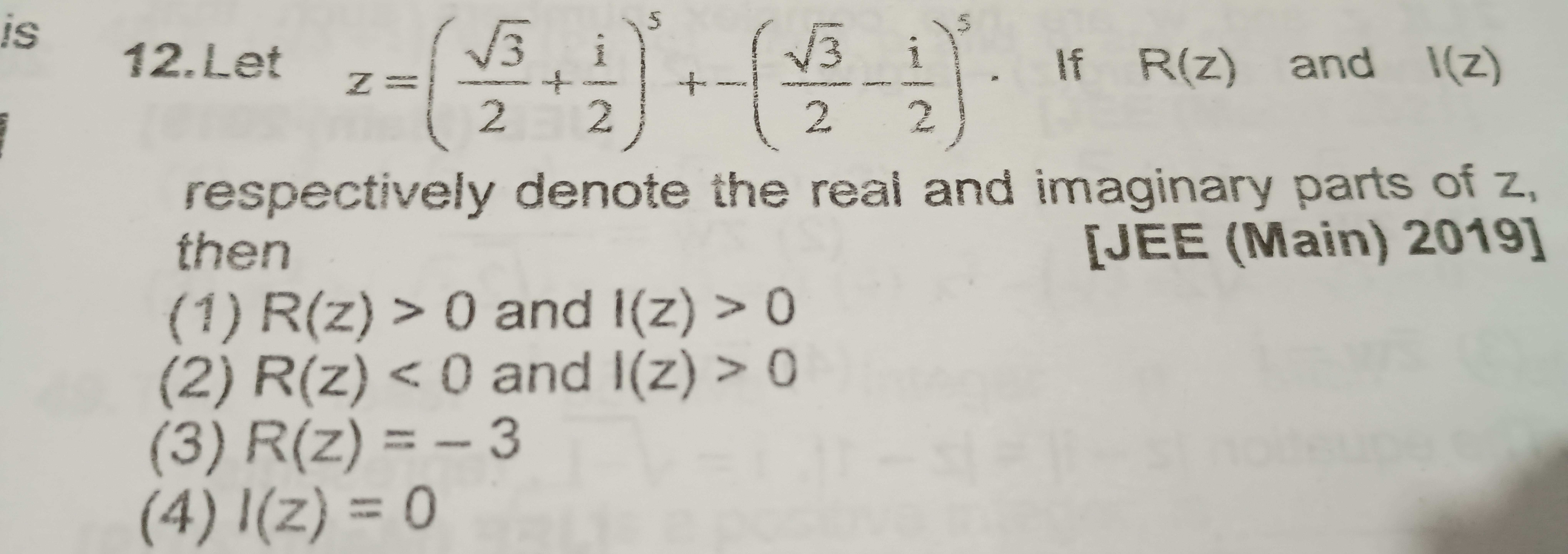Question
Question: Let $z = (\frac{\sqrt{3}}{2} + \frac{i}{2})^5 + (\frac{\sqrt{3}}{2} - \frac{i}{2})^5$. If R(z) and I...
Let z=(23+2i)5+(23−2i)5. If R(z) and I(z) respectively denote the real and imaginary parts of z, then

A
R(z) > 0 and I(z) > 0
B
R(z) < 0 and I(z) > 0
C
R(z) = -3
D
I(z) = 0
Answer
I(z) = 0
Explanation
Solution
The complex numbers 23+2i and 23−2i can be represented in polar form as eiπ/6 and e−iπ/6 respectively. Using De Moivre's theorem, their fifth powers are ei5π/6 and e−i5π/6. The sum z is given by z=ei5π/6+e−i5π/6. Using the identity eiθ+e−iθ=2cosθ, we get z=2cos(5π/6). Evaluating cos(5π/6)=−23, we find z=2(−23)=−3. Therefore, the real part of z is R(z)=−3 and the imaginary part is I(z)=0. Option (4) states I(z)=0, which is true.
